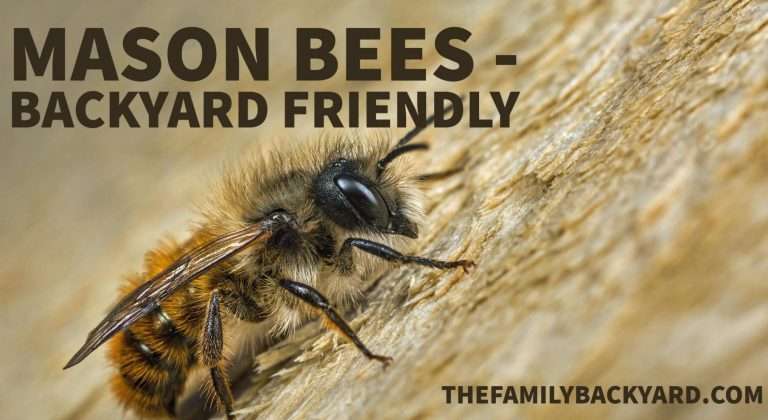
The Benefits of Raising Mason Bees
Mason bees are a bee species that are native to the United States. They are gentle souls and solitary. This sets them apart from the traditional bumblebees and honey bees. They can easily pollinate several times more than the traditional honey bees.
What Makes the Mason Bees Different?
The biggest thing that sets Mason bees apart from other bees is the fact they are solitary creatures versus the honey bee who lives in an enormous hive. There are no worker bees, and each female of the species is fertile. Mason bees get their name from their tendency to pack their eggs in the mud. They are also a very mellow tempered bee that rarely stings. They will only sting if they are squeezed or get wet. Their stinger is not barbed and you most likely won’t feel it if they do try to sting. You can easily come within inches of their nesting sites without them doing anything.
Mason Bee Life Cycle
The Mason bees come out of their cocoons, and the males are usually out first. The females emerge and immediately mate with several male Mason bees. The male Mason bee dies soon after, leaving the females to construct their nests. The nests can be anything from a hollow log or twig to small cavities. As soon as a female Mason bee has selected a nesting site, she begins to gather pollen and nectar for her nest. This process takes several days, but once the female feels like she has enough pollen and nectar stored she backs into her nesting site and lays her eggs on top of the pollen and nectar. Once she has finished laying her eggs, she makes a wall of ‘mud’. This mud is made up of dirt, chewed plant materials, and clay. She will repeat this process over and over again until each space is filled. When she is finally finished, she will plug the hole and move on to another nest site to repeat the process over again. The larvae will hatch and eat most of the nectar and pollen in a few weeks. Once this is almost gone they spin their own cocoons and hibernate until the spring.
Mason Bee Management
Solitary bees like the Mason bee don’t produce honey or beeswax and are largely immune to the diseases that plague honeybees or bumblebees. They are very easy to manage and many people have started setting up nesting sites in their backyards.
Making a Nesting Site
Many people have started making bee houses or hotels in their backyards. Since this bee is so shy, the house should be little ways away from where you spend most of your time in your backyard. Turn them so they face the early morning sun, this will encourage them to start pollinating. A simple thing to use for a bee house or hotel is a piece of wood that you drill holes in or thick cardboard tubes. Make sure you plug one end of the tube. Make sure the is thick, clay-like mud available. If there isn’t any, the bees will move on until they find some suitable mud to pack into their nesting sites.
Nesting Site – Upkeep
There is very little upkeep in the nesting site but you will have to devote a small amount of time for your bees to thrive. You should replace your drilled blocks every two years, and you do this mid-summer after the year’s batch of baby bees have come out of hibernation. Look for holes that at still plugged and no bees came out. These should be removed and destroyed in case of mold. You should move the tubes or blocks that are occupied in the winter to a cool, dry place like a garage or unheated porch. You want them to stay dry but keep hibernating. You can move them back outside in early March and watch the next batch of bees thrive.
Mason bees are renowned for their docile nature and make an excellent teaching tool for children. Start a bee house in your backyard and both your children and the bees will thrive.
